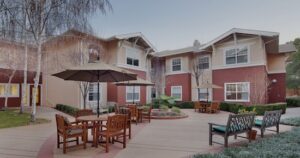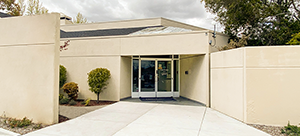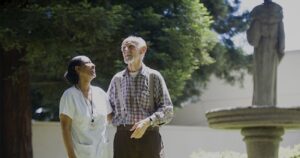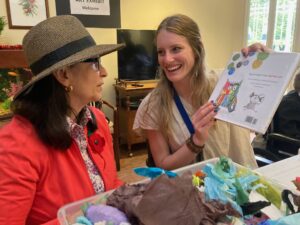Our President & CEO discusses strategic plans, senior living and what it means to be a non-profit assisted living organization.
Approximately fifteen years ago, it was a connection with a resident that affirmed that Adriene Iverson was on the right track. Iverson started her career in senior living when she joined the board of directors for a startup continuing care retirement community. It was there that she worked with a resident representative who played a part in getting her to where she is today.
“She just inspired me, and I think she’s one of the reasons I fell in love with senior living,” says Iverson. “In many respects, she leveraged the best of senior living. She really used it as a platform to live her best life.” Now, Iverson is helping seniors live their best lives as President and CEO of Elder Care Alliance.
Iverson has been with Elder Care Alliance since 2010, originally as Vice President of Operations and most recently as Vice President of Strategy and Business Development. In her new role as President and CEO, she continues to be responsible for the organization’s strategic direction. But Iverson says the position involves more than just big-picture thinking.
“I think the role of this job is twofold,” she says. “You’ve got to have your foot in the day-to-day operations. But you also have to have your vision focused on the more high altitude picture—what’s happening in the broader senior living landscape.”
Spearheading a Strategy at Elder Care Communities
The strategic framework Iverson is spearheading involves three macro-strategies. The first focuses on research, creation and innovation. This includes continuing to develop evidence-based programs that improve quality of life for residents and employees. Some of these initiatives have included implementing an innovative new memory care philosophy and kicking off a comprehensive employee wellness program.
The goal of the second strategy is to create an environment of robust professional development. Elder Care Alliance recognizes that employees are central to the work they do and a core part of pursuing their mission, says Iverson, which is why she is working to build professional development into the infrastructure of the organization.
The last element of the plan aims to promote growth and diversification of services offered by Elder Care Alliance. This entails not just building new communities, but extending services to local seniors who are living in their own homes or with family.
Iverson has also had plenty of experience fine-tuning the everyday processes of the four Elder Care Alliance communities. She played an essential part in the implementation of a fully integrated software platform and electronic health records in 2011. Iverson says this new platform has resulted in better communication among the communities and facilitates seamless transitions between different care settings. It also has had direct benefits for the residents.
“It allows us to look more broadly at our residents and their histories a little bit easier,” says Iverson. “If there is an issue, we can look back and try to discern what’s happening and be more proactive. It allows us to capture changes in [the health of] our residents in real time so that we can react appropriately.”
Investing Back into Non-Profit Assisted Living Communities
Iverson says advancements such as the integrated software platform are enabled by Elder Care Alliance’s status as a non-profit. “We believe that as a non-profit that we have a mandate to perform at a higher standard because of the public benefit we receive,” she says. At the end of the year, profits aren’t returned to an investor and are instead used to invest in the programs and projects that make a true impact on residents and employees, such as spiritual care services and employee wellness programs.
One of these investments was the implementation of the I’m Still HereTM approach in Elder Care Alliance’s memory care communities. Iverson says this decision wasn’t made from a business perspective but to truly provide the best care. “When we invested in our memory care programming, our memory care [neighborhoods] were running 95- to 100-percent full,” she says. “But we made the decision to implement the program, and it has had a profound impact on the quality of life for our residents and our employees.”
Iverson says seeing the positive impact her work has on residents and employees is one of the most rewarding parts of her job. No matter how many responsibilities she juggles, she makes sure to take time to hear from the people she serves. “I think so many times we’re so busy that we don’t see past the physical person in front of us,” she says. “But when you actually stop, hear their story, and see them more completely—who they were and how all of those experiences shaped who they are today—it’s amazing.”




















